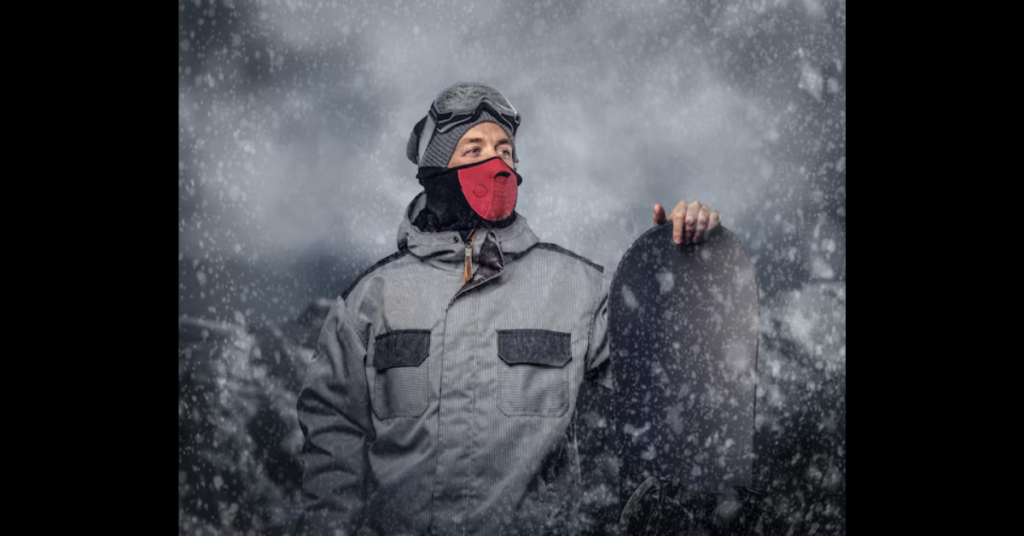A freeze warning is a critical alert issued by meteorological agencies to inform the public of impending freezing temperatures that can cause significant damage to crops, landscapes, and even threaten human safety. Understanding the nature of freeze warnings, their implications, and how to prepare for them is essential for individuals, communities, and industries that may be affected by cold weather. This comprehensive article delves into the science behind freeze warnings, the types of freeze conditions, preparation strategies, and the potential impacts on agriculture, infrastructure, and public health.
What Is a Freeze Warning?
A freeze warning is a notification that temperatures are expected to drop to or below 32°F (0°C) for a prolonged period, typically overnight. It serves as a precautionary measure to alert individuals and businesses to take protective actions to mitigate the adverse effects of freezing temperatures. These warnings are issued by the National Weather Service (NWS) and local meteorological agencies, often in conjunction with frost advisories or hard freeze warnings, depending on the severity of the cold.
Types of Freeze Conditions
Freeze warnings can be categorized into different types based on the anticipated temperatures and duration of freezing conditions:
- Frost Advisory: Issued when temperatures are expected to fall to between 33°F and 36°F (0.5°C and 2.2°C). This is often the first indication that freezing temperatures could affect sensitive plants and outdoor elements.
- Freeze Warning: Issued when temperatures are expected to drop to 32°F (0°C) or lower. This warning indicates that conditions are likely to cause significant harm to crops, vegetation, and sensitive infrastructure.
- Hard Freeze Warning: Issued when temperatures are predicted to fall to 28°F (-2°C) or lower for several hours. A hard freeze can cause severe damage to crops, pipes, and other elements that are not insulated against extreme cold.
The Science Behind Freeze Warnings
Understanding how and why freeze warnings are issued involves some basic meteorology. Freezing temperatures occur when the air temperature drops to the freezing point of water, leading to the formation of frost and ice. Several factors contribute to the likelihood of freezing temperatures, including:
- Radiational Cooling: During clear nights, the Earth’s surface loses heat to the atmosphere. If there are few clouds to trap heat, the ground cools rapidly, leading to freezing conditions, especially in low-lying areas.
- Humidity Levels: Dry air allows for more efficient cooling than humid air. In conditions with low humidity, temperatures can drop quickly, increasing the risk of frost and freeze.
- Geographical Features: Certain areas, such as valleys and low-lying regions, are more susceptible to freezing temperatures due to cold air drainage, where cold air settles in these locations.
- Time of Year: Freeze warnings are more common in late fall, winter, and early spring, particularly in temperate regions. However, unusual weather patterns can lead to freeze warnings at any time of the year.
The Importance of Freeze Warnings
Freeze warnings play a vital role in agricultural planning, public safety, and infrastructure protection. Here are several reasons why these warnings are crucial:
1. Agriculture and Crop Protection
Agriculture is one of the sectors most affected by freeze conditions. A freeze can damage or destroy crops, leading to significant economic losses for farmers and affecting food supply chains. By issuing freeze warnings, agricultural stakeholders can take preventative measures, such as:
- Covering Sensitive Plants: Farmers can use frost cloths or blankets to cover plants susceptible to freezing temperatures.
- Irrigation: Watering plants before a freeze can help protect them, as moisture can release heat during freezing, thus creating a microclimate that is slightly warmer.
- Harvesting Decisions: Farmers may choose to harvest crops early to avoid potential losses due to an impending freeze.
2. Public Safety and Health
Freeze warnings are essential for public safety. Exposure to extreme cold can lead to health issues, including hypothermia and frostbite. By alerting the public to freezing conditions, individuals can take necessary precautions:
- Staying Indoors: People are encouraged to limit outdoor activities during freeze warnings to prevent exposure to cold temperatures.
- Protecting Pets: Pet owners are advised to bring animals indoors or provide adequate shelter to protect them from the cold.
- Dress Appropriately: Individuals should dress in layers and cover exposed skin to prevent frostbite and maintain body warmth.
3. Infrastructure and Utility Preparedness
Freezing temperatures can cause significant damage to infrastructure, including roads, bridges, and utilities. Freeze warnings allow municipalities and utility companies to prepare and respond effectively:
- Piping Protection: Homeowners and businesses are advised to insulate pipes to prevent freezing and bursting, which can lead to water damage and costly repairs.
- Road Maintenance: Transportation departments can pre-treat roads with salt or brine solutions to prevent ice formation, ensuring safer travel conditions.
- Emergency Response: Utility companies can prepare for increased demand for heating and potential outages due to icy conditions, ensuring they are ready to respond promptly.
Preparing for a Freeze Warning
Preparation is key to minimizing the impact of freeze warnings. Individuals, families, businesses, and communities should develop strategies to protect themselves and their property. Here are some essential preparedness tips:
1. Home Preparation
- Insulate Pipes: Use foam insulation or heat tape on exposed pipes to prevent freezing and bursting.
- Seal Drafts: Check windows and doors for drafts and seal them to retain heat. Use weather stripping or caulk as necessary.
- Service Heating Systems: Ensure that heating systems are in good working condition. Have a professional inspect and maintain furnaces, heat pumps, and other heating equipment.
2. Outdoor Preparations
- Cover or Move Plants: Cover sensitive plants with cloths or move potted plants indoors or to sheltered locations.
- Drain Irrigation Systems: If you have an irrigation system, drain it to prevent freezing and damage.
- Protect Outdoor Equipment: Bring in or cover outdoor furniture, grills, and other equipment that may be damaged by freezing temperatures.
3. Vehicle Preparedness
- Winterize Your Vehicle: Ensure your vehicle is equipped for winter weather, including antifreeze levels, winter tires, and functioning wipers.
- Keep an Emergency Kit: Maintain an emergency kit in your vehicle, including blankets, food, water, and a flashlight in case you become stranded.
4. Community Engagement
- Stay Informed: Sign up for local weather alerts and monitor forecasts for updates on freeze warnings.
- Community Outreach: Neighbors should check on one another, especially the elderly or those who may need additional support during cold weather.
- Local Resources: Familiarize yourself with local resources, such as warming centers or shelters, in case of extreme cold conditions.
The Impact of Freeze Warnings
The consequences of freeze warnings can be wide-ranging, affecting various sectors and aspects of daily life. Here, we explore some of the most significant impacts:
1. Economic Impact
Freeze warnings can have substantial economic consequences, particularly in agriculture and related industries. Crop losses can lead to increased prices for consumers and financial strain on farmers. Additionally, businesses dependent on agriculture may suffer from reduced supply and sales.
2. Environmental Impact
Prolonged freezing temperatures can have adverse effects on local ecosystems. Sensitive plants and crops may not survive a freeze, impacting local biodiversity. Additionally, wildlife may be forced to change their behavior or habitat to survive, leading to longer-term ecological consequences.
3. Infrastructure Damage
Infrastructure can suffer severe damage due to freezing temperatures. Water main breaks, damaged roads, and electrical outages can disrupt daily life and lead to costly repairs. Communities may need to allocate resources for emergency repairs, diverting funds from other important initiatives.
4. Public Health and Safety
As previously mentioned, freezing temperatures pose health risks to vulnerable populations. Increased incidences of cold-related injuries, such as frostbite and hypothermia, may strain healthcare systems during cold snaps. Additionally, slips and falls on icy sidewalks and roads can lead to injuries, increasing the burden on emergency services.
Conclusion
Freeze warnings are vital alerts that serve to protect life, property, and crops from the detrimental effects of freezing temperatures. Understanding the nature of these warnings, the science behind them, and the importance of preparation is essential for mitigating their impacts. By taking proactive steps and fostering community engagement, individuals can safeguard themselves and their loved ones against the challenges posed by cold weather.
As climate patterns continue to evolve, the frequency and intensity of freeze warnings may also change, underscoring the need for ongoing awareness and preparedness. By staying informed, individuals and communities can navigate the challenges of freezing conditions with resilience and adaptability, ensuring safety and minimizing disruption during the coldest months of the year.







